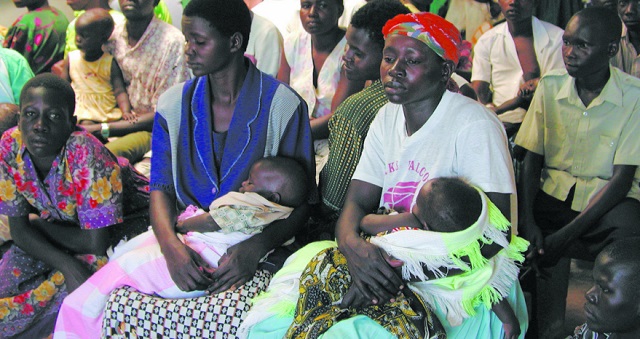
Is it targeting the wrong people?
Kampala, Uganda | PATRICIA AKANKWATSA | Falling ill and having to visit a healthcare facility is a frightening experience for most people. Feeling anxious, uncertain and maybe even helpless is common even among people living in countries with highly developed care.
In Uganda, a poor country, a sick person endures additional pain of not knowing whether they will get treatment, of good quality, and at a cost they can afford. What a report on health service provision in Uganda by the Institute for Health Metrics and Evaluation (IHME) in Washington calls `ABCE’: Access, Bottlenecks, Cost, and Equity.
This is mainly because, according to the report, accessing healthcare in Uganda can be quite expensive. A visit to a health centre averagely costs about Shs12,000 (Approx. US$3) and Shs110,000 (approx.US$30) in a private clinic. The cost of delivery, which is among the costlier procedures, can swing between Shs90,000 (Approx. US$23) at health centre and Shs650,000 (Approx. US$207) at referral hospital. That is in a country where over 40% of the population lives on less than a dollar (Approx. Shs3800) daily. Most of this money is paid by individuals in cash.
That is why a decision in late June by the government to approve the National Health Insurance Scheme (NHIS) Bill is attracting a lot of interest.
Universal health insurance has been on the cards since 1999 when the government first presented a National Health Policy. At the time the government spoke of introducing a social health insurance scheme to address challenges in ensuring equitable health financing in a sustainable manner. The main target was the poor and vulnerable who were not able to access private medical care. In 2006 the Ministry of Health (MoH) was asked to design the social health insurance scheme. The plan has since then been on and off. But could 2019 be the year when it is finally implemented?
Details of the plan
According to the plan, the Bill is set to be tabled before parliament for discussion in two to three months’ time. It is all part of a global push by the World Health Organization (WHO) for universal health coverage. According to WHO, all people should obtain the health services they need without suffering the financial hardship of incurring out of pocket expenses to pay for said services. Already, however, the proposed insurance scheme is attracting a lot of criticism mainly on its affordability.
Just like in 2006 when it was first mooted, scheme has faced stiff criticism from major stakeholders who describe it as another burden on people in formal employment. They say is should target the poorest and most vulnerable instead.
People like 32-year old Hadija Nabukeera; a housewife and mother of seven, whose husband is a taxi driver.
Nabukeera speaks of the day her youngest daughter, Dorothy, fell ill. She says, together with her husband, they decided to treat Dorothy at home – with quinine tablets because they assumed she had malaria and knew quinine was the standard treatment. Also they dreaded the cost of going to the clinic.
But then Dorothy’s condition worsened and they had to go to a nearby small area clinic. When tests showed Dorothy had typhoid fever, she was admitted and put on an intravenous drip for two days. But when she did not get better, the doctors referred them to a private hospital in the city.
Nabukeera knew that private hospitals are expensive and was worried that they would not be able to afford it, she wanted to try to give her child the best care possible.
When they got to the private hospital, the doctors asked the family to pay Shs15, 000 for a blood test to confirm the typhoid fever diagnosis. She was then told that admission to the hospital would be Shs110, 000. This was out of reach for them. So off they went again – to a government hospital where Dorothy was admitted at a lower cost.
She had gotten so weak at this point that the doctors immediately ordered blood transfusions, something that cost even more money to buy blood.
Dorothy recovered and they were able to go back home a few days later. But the process had taken three weeks at four different health care facilities and cost the family Shs300,000. That was equal to two months’ income for her husband.
This sum doesn’t take into account the family’s lost income over that period since the family paid for the treatment using the family’s savings and a microfinance loan her husband had just received. So the family business was disrupted and they became economically insecure. Stories like this are common but it is unclear how the proposed government scheme will fix them. That is why contributing to it is seen as another burden.
 The Independent Uganda: You get the Truth we Pay the Price
The Independent Uganda: You get the Truth we Pay the Price



